table of contents
Puff pastry is one of the most versatile doughs in baking. It can be used for sweet treats like Italian cannoncini, savory appetizers such as vol-au-vent, and iconic desserts including Napoleon (Mille-feuille) and Saint Honoré.
Unlike yeasted doughs, puff pastry rises thanks to its unique steam-leavened structure. As the butter layers melt and water turns into steam in the oven, the trapped vapor pushes the dough apart, creating hundreds of thin, flaky layers.
Making homemade puff pastry is often seen as complicated, but the technique is actually straightforward. The key is patience: the dough requires multiple folds and long resting periods in the refrigerator to develop its signature crisp, buttery texture.
The Ingredients
Puff pastry is made with just a few essential ingredients, but each plays a key role in creating the signature flaky, buttery layers:
Flour: Use a strong flour with about 12–13% protein (similar to bread flour). The higher gluten strength supports the repeated rolling and folding and allows the pastry to rise properly in the oven. While plain all-purpose flour can work, many bakers prefer blending it with about 50% stone-ground flour for added flavor without losing structure.
Liquids: Classic puff pastry dough uses only water. Some recipes add about 10 g (2 tsp) white vinegar per 1 kg flour (≈8 cups) to slightly strengthen the gluten. A splash of alcohol (like vodka) is sometimes used for the same purpose and to promote flakiness during baking.
Butter: The most important ingredient for flavor and texture. High-quality unsalted butter provides the aroma and crispness that margarine cannot match. Some bakers use a butter-and-flour mixture to make the lamination process easier. Margarine or shortening may simplify handling, but the baked pastry will be less flavorful and aromatic.
Salt: Enhances flavor and helps with browning in the oven. A good ratio is about 15 g (2 ½ tsp) salt per 1 kg flour (≈8 cups).
TRADITIONAL PUFF PASTRY RECIPE

Equipment
- Stand Mixer
Ingredients
For the Dough
- 350 gr Baking Flour ((W280 or 10%-11% of proteins))
- 150 gr Butter
- 10 gr Salt
- 200 gr Water
For the Fat Dough
- 350 gr Baking Flour ((W280 or 10%-11% of proteins))
- 150 gr Butter
Instructions
For the Dough
- Knead all ingredients and let the dough rest for 24 hours in the refrigerator at +4°C (39°F) well covered with a plastic sheet
For the Fat Dough
- Take the butter out of the fridge and soften it by hitting it with a rolling pin on the table to preserve its plasticity.
- Mix butter and flour in a stand mixer with the leaf, shape the mixture into a rectangular loaf between 2 sheets of grease paper, roll out to a thickness of ½ cm and refrigerate for 90 minutes.
How to Make Folds
- roll out the dough, giving it a rectangular shape with a height double that of the width and 1/2cm thick.
- Do the same with the fat dough, trying to roll it out with the exact proportions and dimensions.
- Place the fat dough on top of the dough, and close the 2 top and bottom edges in the center, sealing them carefully. Turn the dough to 90 degrees (so that the lateral sides are closed)
- Roll out the dough in a vertical direction until it is 1cm thick
- Give the first Single Fold: With the dough rolled out in front of us (in a vertical direction), fold the dough’s top edge to about 2/3 of the dough’s height and then overlap it with the lower edge. In this way, we will obtain a rectangle of dough composed of 3 layers.
- Cover with plastic wrap, and chill in the fridge at +4 °C (39°F) for 1 hour
- With the dough in front of you and the lateral sides closed, start to roll it to form a rectangle about 1cm thick, whose height will be twice the width.
- Let's make the Double Fold (or 4-Fold). To do this, bring the upper and lower flaps towards the center and fold them in half, thus obtaining a rectangle with 4 layers of dough.
- As before, turn 90 degrees, wrap everything in plastic wrap, and chill in the fridge at +4 °C (39°F) for 1 hour.
- Repeat the 2 folds seen above. Give the dough 2 single fold (3-fold) and 2 double fold (4-fold), always letting chill in the fridge for 1 hour between one step and the next.
- Once the puff pastry is done, I recommend that you let it rest 1 night in the fridge before rolling it out and cutting out the shapes to be baked.
Nutrition
How to Make Puff Pastry
1. Preparing the Dough
The first step in making puff pastry is preparing the lean dough, made of flour, water, and salt. The dough should be elastic but not overworked—too much kneading makes it stiff and harder to roll. If this happens, you’ll need longer resting times in the fridge.
For the butter block, mix butter at about 50°F (10°C) with a little flour. The secret is to work with butter that’s “plastic”—pliable but still cool. To achieve this, place cold butter between two sheets of parchment paper and pound it with a rolling pin until it softens evenly. Once mixed with flour, shape it into a rectangle, wrap, and chill at 39°F (4°C) for at least 1 hour.
Before laminating, make sure the lean dough and butter block are at a similar consistency. This is crucial for clean layers and even puff.
2. Rolling and Folding
This is the step most home bakers fear, but with patience it’s simple. Roll the lean dough into a rectangle about twice as long as it is wide, ½ cm (about ¼ in) thick. Roll the butter block to the same dimensions, place it on the dough, and fold the top and bottom edges over the butter to enclose it. Rotate 90° so the seams are at the sides—now you’re ready to start folding.
Fold #1: The Single Fold (3-Fold)
Roll the dough into a rectangle, then fold the top third down and the bottom third up, like folding a letter. This creates 3 layers. Wrap in plastic, rest at 39°F (4°C) for 1 hour.

Fold #2: The Double Fold (4-Fold)
Roll the dough again to the same rectangle. Fold both the top and bottom edges toward the center, then fold in half like a book. This creates 4 layers. Wrap and rest in the fridge for 1 hour.
Repeat: Perform a total of 2 single folds and 2 double folds, always resting the dough in the fridge for 1 hour between folds. Once complete, let the pastry rest overnight in the fridge before rolling and cutting shapes. After cutting, chill the pieces again for 1–2 hours to prevent shrinkage in the oven.
Tip: Never knead puff pastry once laminated, or you’ll ruin the layers. For scraps, stack them gently and roll out for small savory snacks—they won’t rise as much but are still delicious.

Cooking & Storage
Bake puff pastry at 355–375°F (180–190°C) in a static oven, keeping the door closed for the first 10 minutes to trap steam and allow maximum lift.
Once the pastry has fully risen and begins to color, you can dust with powdered sugar and cocoa butter and return it to the oven. This step enhances color and creates a thin caramelized layer that protects the pastry from moisture when filled.
Important: Do not sprinkle sugar on raw pastry, as steam during baking will cause uneven browning.
Storage
Wrap unbaked puff pastry well and refrigerate at 40°F (4°C) for 3–5 days. After that, the dough loses strength and won’t rise properly. For longer storage, freeze at 0°F (-18°C) for up to 1 month. For best results, chill in the fridge for 24 hours before freezing, and thaw slowly in the fridge before rolling and baking.
Tips for Flaky Puff Pastry
- Keep everything cold: butter should be plastic (pliable, not soft). Chill dough and butter block before and between turns.
- Light flouring: dust the bench and rolling pin lightly; brush off excess flour before folding to avoid tough layers.
- Roll, don’t press: roll from the center outward with even pressure; don’t mash the layers or they won’t rise.
- Rest between turns: 20–30 minutes in the fridge (or 10 minutes in the freezer) relaxes gluten and keeps butter laminated.
- Right thickness: for most uses, final sheet is about 1/8–3/16 in (3–5 mm).
- High heat to start: bake hot for lift, then finish to dry and color. For caramelized tops, dust with powdered sugar near the end and return to the oven.
- Dock when needed: poke the base with a fork for flat layers (Napoleon/mille-feuille), but leave un-docked for maximum puff (palmiers, vol-au-vent).
Common Mistakes to Avoid
- Butter too warm or too hard: warm butter leaks; rock-hard butter shatters. Aim for pliable, cool butter that bends without cracking.
- Skipping the resting time: without rest, gluten shrinks the pastry in the oven and layers fuse together.
- Too much flour on the bench: excess flour toughens the dough and dulls the flaky texture.
- Pressing edges closed: sealing the edges traps steam and blocks lift—trim edges cleanly with a sharp knife.
- Wrong oven temperature: too low → greasy, flat pastry; too high → scorched surface with raw layers inside.
- Opening the oven early: heat loss collapses layers; wait until pastry is well set and deeply golden.
- Under-baked centers: if the top colors too fast, lower the rack or temperature and bake a little longer to dry through.
Serving Ideas & Variations
Use homemade puff pastry for both sweet and savory classics:
- Napoleon / Mille-feuille: bake sheets flat (docked), then layer with pastry cream and finish with icing or powdered sugar.
- Palmiers (Elephant Ears): roll with sugar, slice, and bake until deeply caramelized.
- Vol-au-vent & savory pies: cut rings for lids or line tart pans for quiches and pot pies.
- Cheese straws & twists: sprinkle with parmesan or cheddar, twist, and bake crisp.
- Tarte Tatin: cap caramelized fruit with a puff pastry lid and bake until puffed and golden.
Variations: classic laminated puff pastry; inverted puff pastry (butter outside for extra-fine layering); and rough puff (quick method) for faster, reliable flakes.
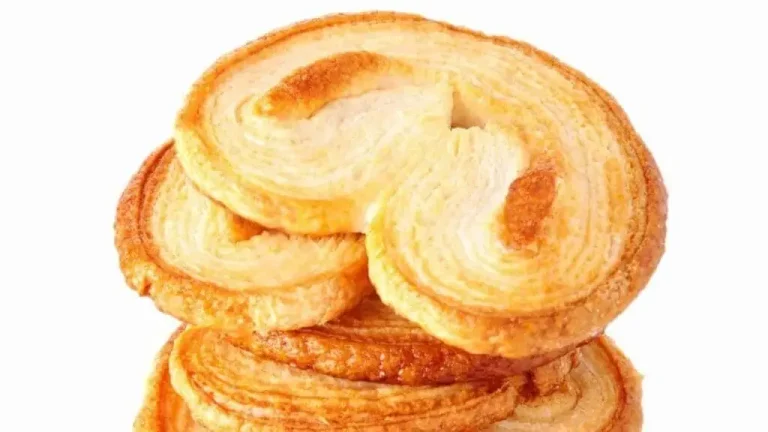


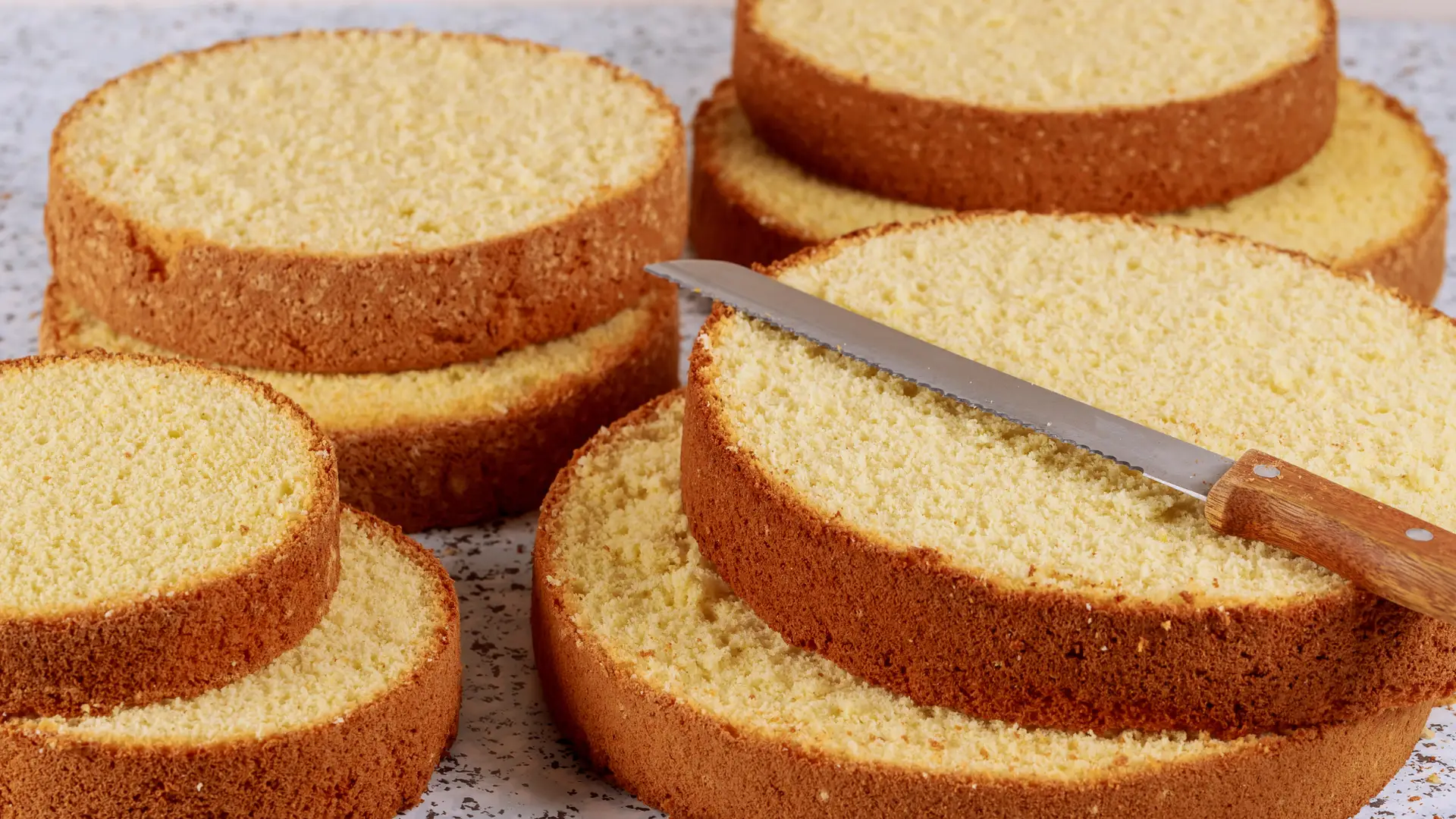
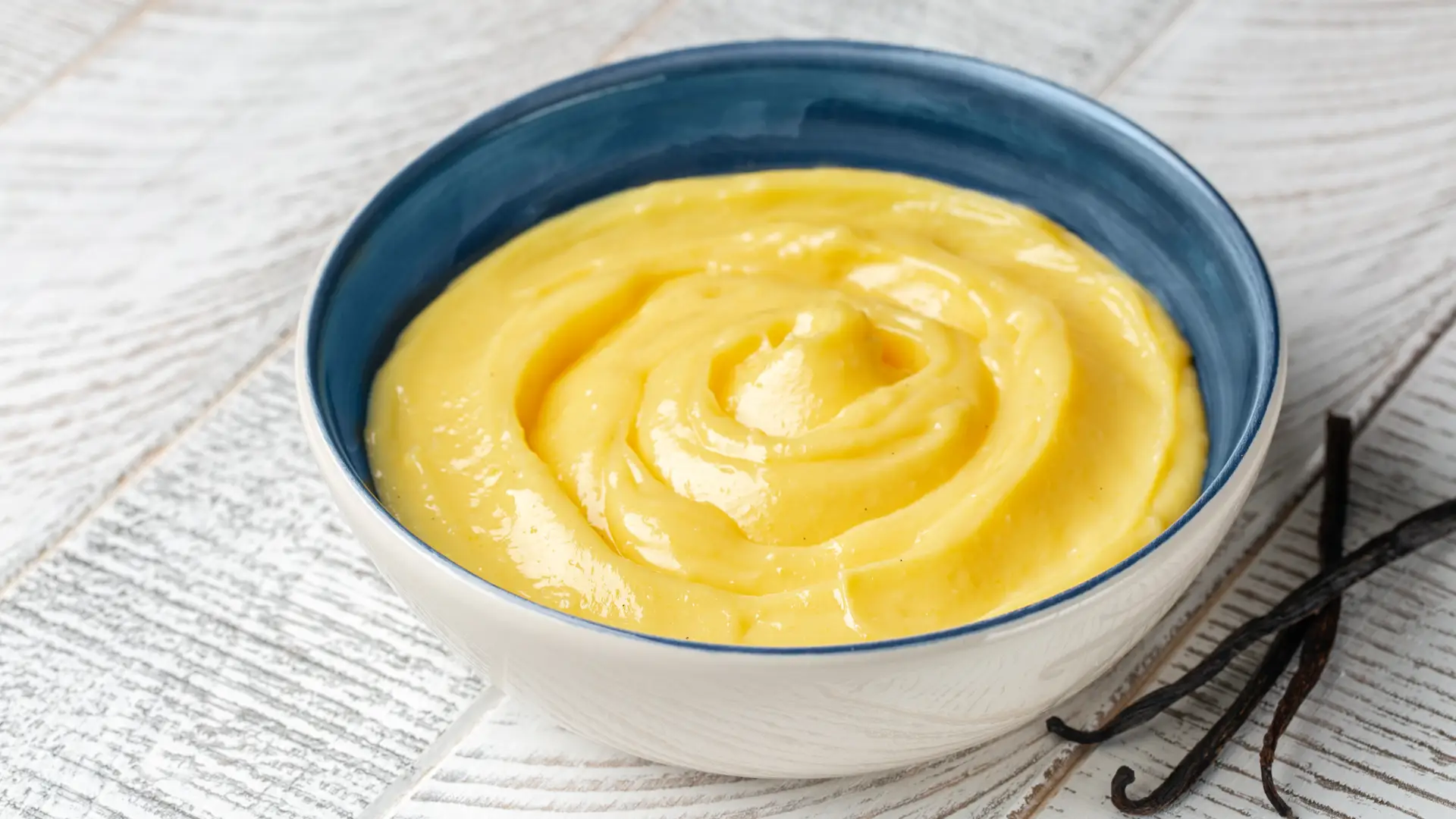

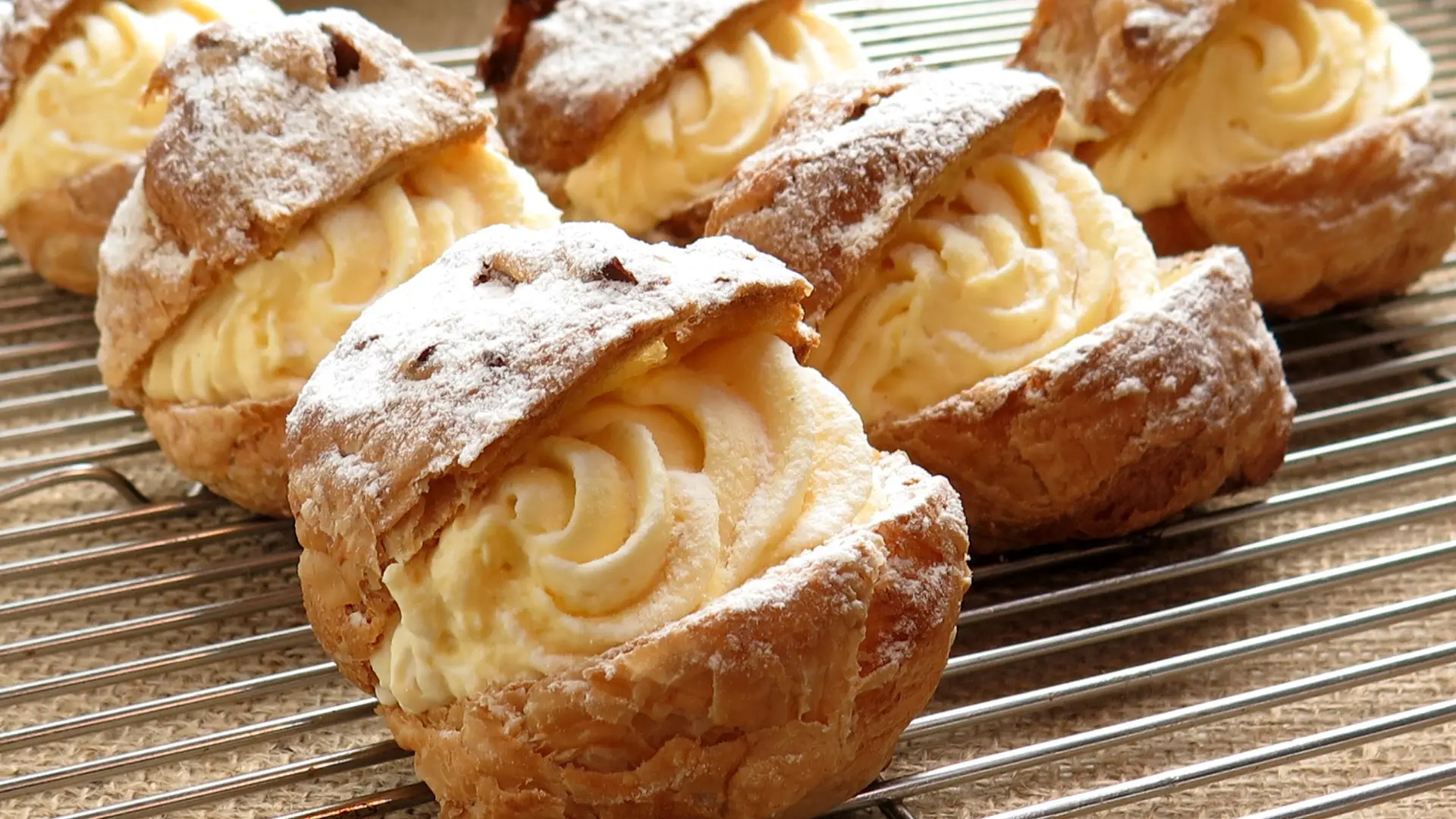




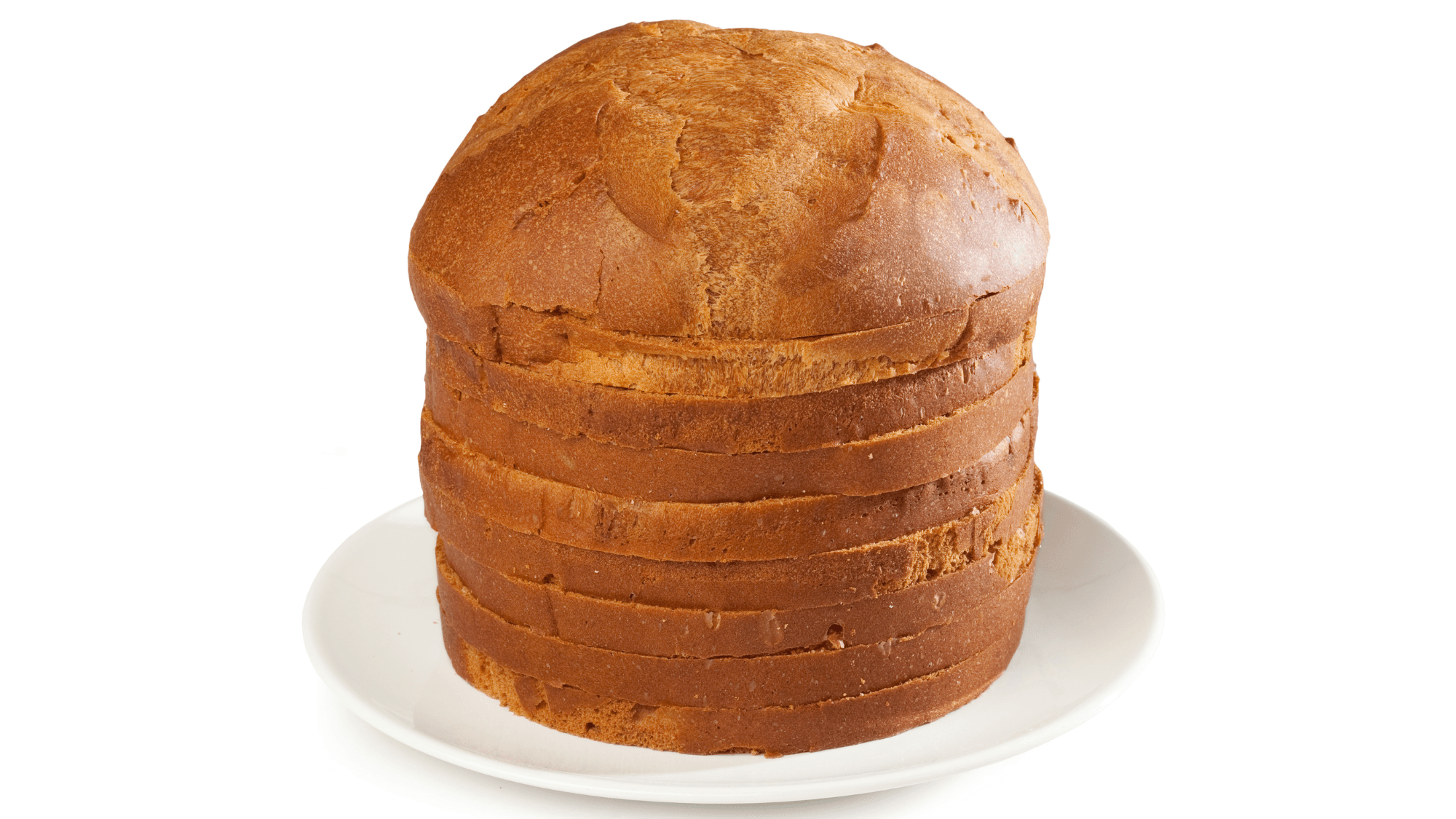








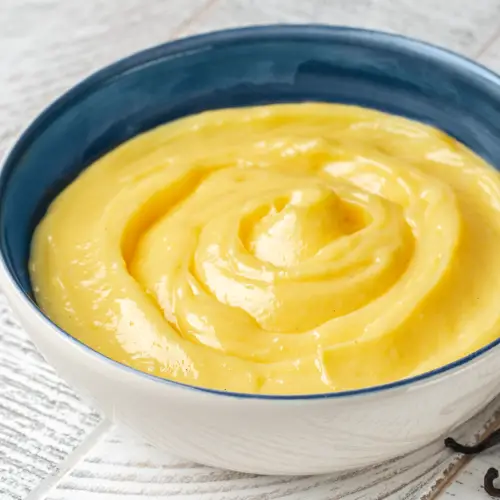


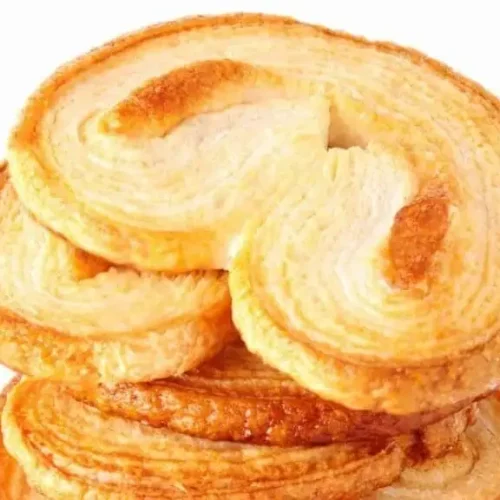


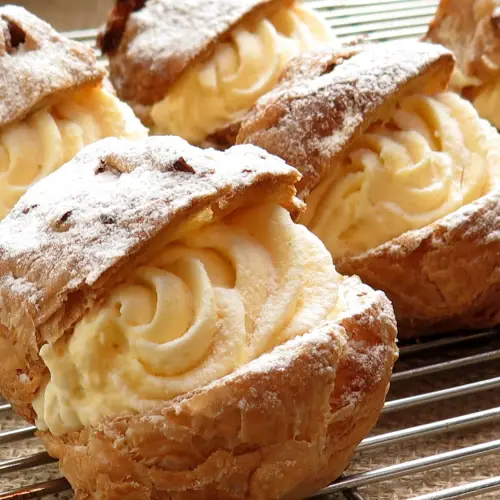
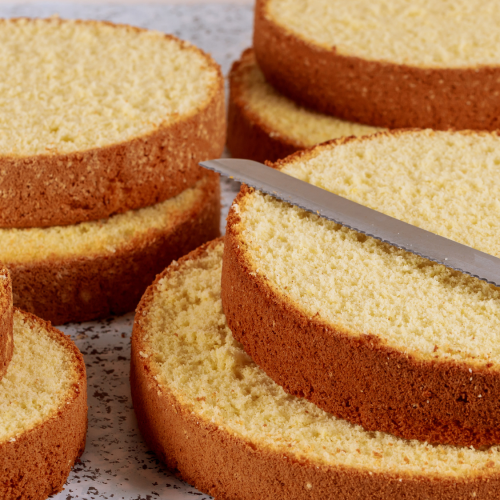

4 comments available
Pingback: Galette des Rois (French King Cake) | Original Recipe
Grazie per i consigli, molto utili. Vorrei chiedere cortesemente,in che percentuali si deve mettere il burro di cacao in polvere sullo zucchero a velo? Grazie in anticipo.
Non vedo indicate le dosi
Ciao!
hai ragione, in questa pagina spiego la tecnica e gli ingredienti.
Ecco il link alla ricetta: Ricetta della Pasta Sfoglia Classica
A presto!